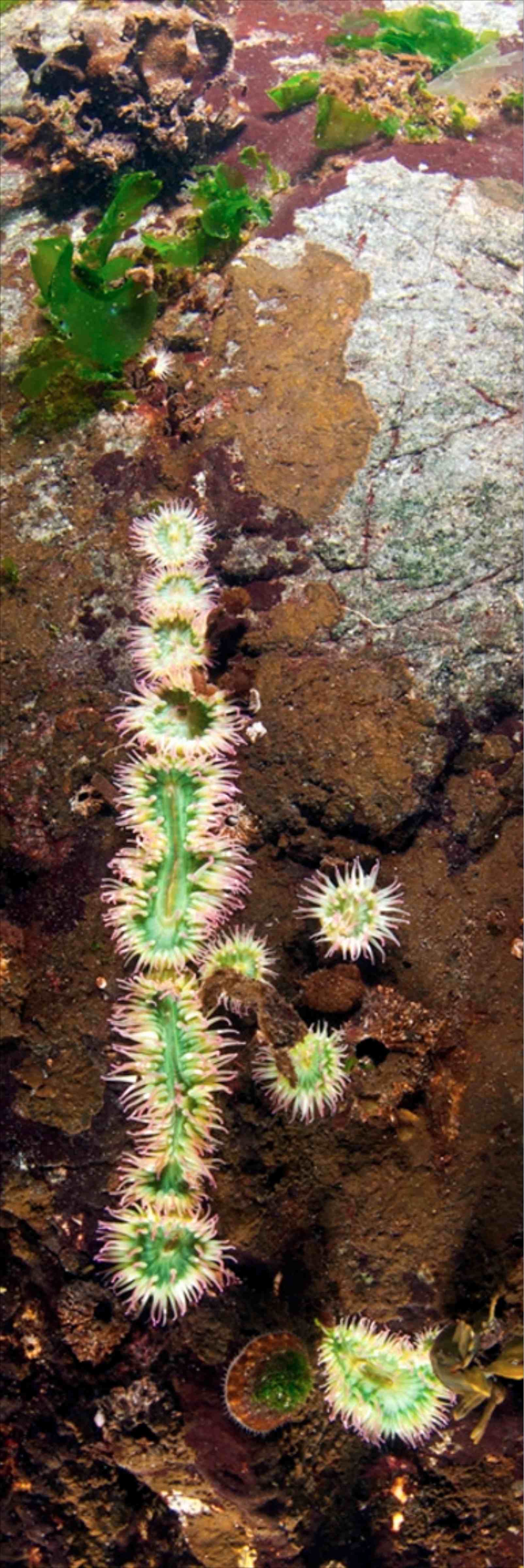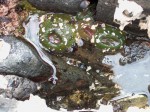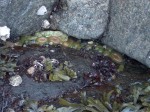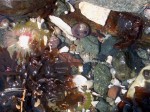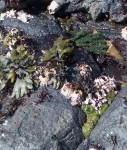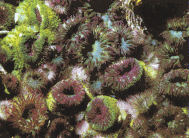 Link to extended essay of Santiago on Anthopleura distribution in the intertidal zone.
Link to extended essay of Santiago on Anthopleura distribution in the intertidal zone.
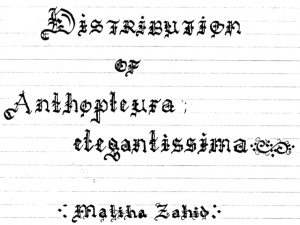 Link to the extended essay by Maliha Zahid on Anthopleura-elegantissima-Distribution
Link to the extended essay by Maliha Zahid on Anthopleura-elegantissima-Distribution
- Since they cannot withstand dry conditions, they live near tidepools or in crevasses.
- A clone of Anthopleura elgantissima living where the shade of the rock retains moisture
- When the anemone is deprived of light, the green color does not develop. You can see the pink tentacles in this shot.
- On the west side of Race Rocks, they grow in crevasses for increased water retention.
| Kingdom | Animalia |
| Phylum | Cnidaria |
| Class | Anthozoa |
| Subclass | Zoantharia |
| Order | Actiniatia |
| Family | Actiniidae |
| Genus | Anthopleura |
| Species | elegantissima |
| Common Name | Aggregating Anemone |
Characteristics:
- The aggregating anenome is 2-5 cm in column diameter and 4-5 cm high in its clonal form.
- The tentacular crown is roughly 8 centimeters in diameter.
- The species presents numerous short tentacles, in five or more cycles, which are variously colored.
- At the bases of its tentacles are bulbous structures where certain types of stinging capsules are concentrated.
- The column is light green to white, and twice as long as wide when extended, with longitudinal rows of adhesive tubercles (verrucae)
- Rock, sand, and shell fragments accumulate on anenome by adhering to the tubercles on the column.
- The anenome is a green or olive colour depending on the algae living in its tissues.
Habitat:
It is a species characteristic of middle intertidal zone of semi protected rocky shores of both bays and outer coast from Alaska to Baja California.
Reproduction:
Anthopleura elegantissima reproduces both sexually and asexually. In sexual reproduction, ova are present as early as February and grow steadily until their release in July; the ovarian is then resorbed and new eggs do not appear until the following February. Sperm are released through the summer. The asexual reproduction occurs by longitudinal fission. This process results in aggregations or clones of anemones pressed together in concentrations of several hundred per square meter.
Ecological Niche:
- Anthopleura elegantissima is a carnivore, feeding on small crustacians such as copepods, isopods, amphipods, and other small animals that contact the tentacles.
- It is preyed upon by the nudibranch Aeolidia papillosa, which usually attacks the column, by the nail Epitonium tinctum, which attacks the tips of the tentacles, and by sea stars such as Dermasterias imbricata that can engulf an entire small anemone.
- Moreover, in some anemones, small pink amphipods, Allogaussia recondita, make a home in the gastro vascular cavity. Two types of unicellular algae live in the tissues ofAnthopleura elegantissima in a symbiotic relationship. It is these algae that give the anenome its distinctive green or olive colour.
Interesting Further Studies:
- Ecological niche study was conducted by Santiago, Pearson College Student 1998-2000../../research/santiago/santiago.htm
- The US Environmental Protection Agency (EPA) has investigated using aggregating anenome as a test for salinity. This bioindicator would be used to see the freshwater influx in ocean environments. http://es.epa.gov/ncer/fellow/progress/99/cohenri00.html
- The behaviour of Anthopleura elegantissima at different depths.
- The reproduction cycle of Anthopleura elegantissima.
- Further study of aggregating anenomes at Race Rocks.
References:
- Kozloff, Eugene N. Seashore Life of the Northern Pacific Coast. (Seattle: University of Washington Press, 1983).
- Kozloff, Eugene N. Keys to the Marine Invertebrates of Puget Sound, the San Juan Archipelago, and Adjacent Regions. (Seattle: University of Washington Press, 1974).
- Morris, R.H. etal. Intertidal Invertebrates of California. (Stanford: Stanford University Press, 1980).
-
This file is provided as part of a collaborative effort by the students, faculty, staff and volunteers of Lester Pearson College UWC. Dec. 2001 Wynne Lawrence (PC yr. 27)

